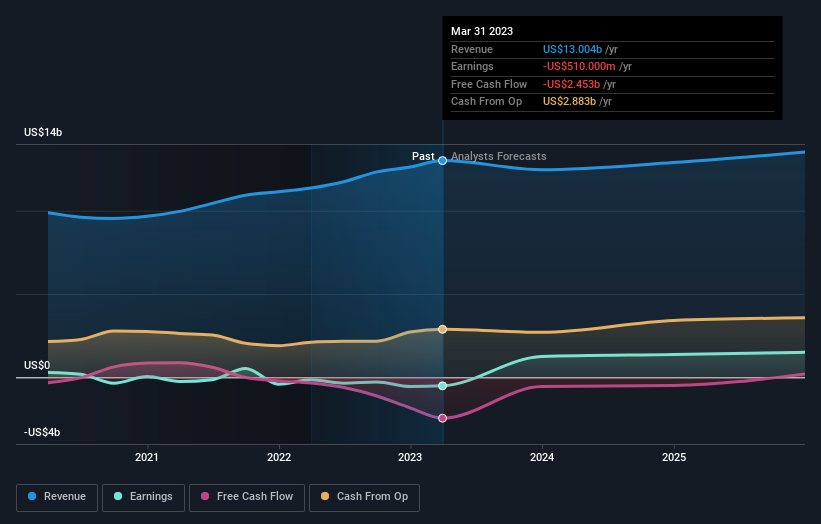
The AES Corporation (NYSE:AES) received a lot of attention from a substantial price movement on the NYSE over the last few months, increasing to US$26.69 at one point, and dropping to the lows of US$20.81. Some share price movements can give investors a better opportunity to enter into the stock, and potentially buy at a lower price. A question to answer is whether AES' current trading price of US$20.81 reflective of the actual value of the large-cap? Or is it currently undervalued, providing us with the opportunity to buy? Let’s take a look at AES’s outlook and value based on the most recent financial data to see if there are any catalysts for a price change.
View our latest analysis for AES
What Is AES Worth?
According to my valuation model, AES seems to be fairly priced at around 19% below my intrinsic value, which means if you buy AES today, you’d be paying a fair price for it. And if you believe that the stock is really worth $25.57, then there isn’t much room for the share price grow beyond what it’s currently trading. In addition to this, AES has a low beta, which suggests its share price is less volatile than the wider market.
What kind of growth will AES generate?

Investors looking for growth in their portfolio may want to consider the prospects of a company before buying its shares. Buying a great company with a robust outlook at a cheap price is always a good investment, so let’s also take a look at the company's future expectations. Though in the case of AES, it is expected to deliver a relatively unexciting top-line growth of 7.1% in the next few years, which doesn’t help build up its investment thesis. Growth doesn’t appear to be a main reason for a buy decision for the company, at least in the near term.
What This Means For You
Are you a shareholder? It seems like the market has already priced in AES’s future outlook, with shares trading around its fair value. However, there are also other important factors which we haven’t considered today, such as the financial strength of the company. Have these factors changed since the last time you looked at the stock? Will you have enough conviction to buy should the price fluctuates below the true value?
Are you a potential investor? If you’ve been keeping tabs on AES, now may not be the most advantageous time to buy, given it is trading around its fair value. However, the positive outlook means it’s worth diving deeper into other factors such as the strength of its balance sheet, in order to take advantage of the next price drop.
So while earnings quality is important, it's equally important to consider the risks facing AES at this point in time. For example, we've discovered 2 warning signs that you should run your eye over to get a better picture of AES.
If you are no longer interested in AES, you can use our free platform to see our list of over 50 other stocks with a high growth potential.
New: Manage All Your Stock Portfolios in One Place
We've created the ultimate portfolio companion for stock investors, and it's free.
• Connect an unlimited number of Portfolios and see your total in one currency
• Be alerted to new Warning Signs or Risks via email or mobile
• Track the Fair Value of your stocks
Have feedback on this article? Concerned about the content? Get in touch with us directly. Alternatively, email editorial-team (at) simplywallst.com.
This article by Simply Wall St is general in nature. We provide commentary based on historical data and analyst forecasts only using an unbiased methodology and our articles are not intended to be financial advice. It does not constitute a recommendation to buy or sell any stock, and does not take account of your objectives, or your financial situation. We aim to bring you long-term focused analysis driven by fundamental data. Note that our analysis may not factor in the latest price-sensitive company announcements or qualitative material. Simply Wall St has no position in any stocks mentioned.
About NYSE:AES
AES
Operates as a diversified power generation and utility company in the United States and internationally.
Very undervalued established dividend payer.


